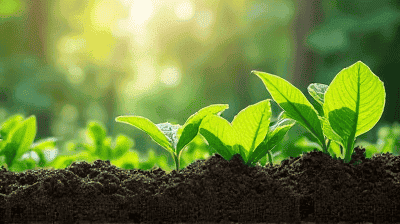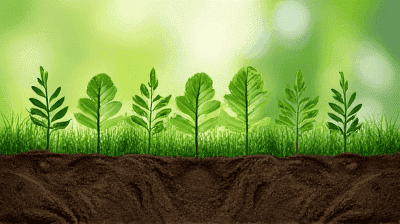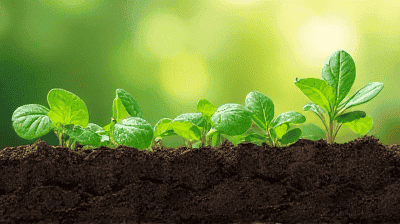
Soil pollution is an increasingly pressing environmental issue that threatens ecosystems, agriculture, and human health. Contaminated soils are often the result of industrial activities, agricultural practices, waste disposal, and urban development, leading to the presence of hazardous chemicals, heavy metals, and organic pollutants. Traditional soil remediation techniques can be costly, disruptive, and sometimes ineffective. In contrast, phytoremediation, the use of plants to clean up contaminated soils, offers a sustainable and eco-friendly alternative.
Soil pollution occurs when harmful chemicals and toxins accumulate in the soil, degrading its quality and disrupting its natural functions. This can lead to a host of environmental issues, including:
Several human activities contribute to soil pollution, including:
Industrial Activities: Factories and manufacturing facilities may release heavy metals, solvents, and other toxic substances into the soil through improper disposal practices or accidental spills.
Agricultural Practices: The excessive use of pesticides, herbicides, and fertilizers can lead to the accumulation of harmful chemicals in the soil.
Waste Disposal: Landfills and hazardous waste sites often contain a variety of pollutants that can leach into the surrounding soil.
Mining Activities: Mining operations can leave behind contaminated soil by introducing heavy metals and toxic chemicals into the environment.
Urban Development: Construction activities can disturb contaminated soil and release pollutants into the environment.

Phytoremediation is a bioremediation technology that utilizes plants to extract, degrade, or immobilize contaminants in soil and water. This method harnesses the natural abilities of various plant species to remediate polluted environments in a cost-effective and environmentally friendly manner.
Plants can interact with contaminants in several ways, leading to their removal or transformation:
Phytoextraction: This process involves the uptake of contaminants from the soil through plant roots and their subsequent translocation to the stems and leaves. The contaminants can then be harvested when the plants are removed.
Phytostabilization: In this process, plants immobilize contaminants in the soil, preventing them from leaching into groundwater or being taken up by animals. This is particularly useful for heavy metals.
Phytodegradation: Certain plants can metabolize organic contaminants through their natural biochemical processes, breaking them down into less harmful substances.
Rhizodegradation: This refers to the breakdown of contaminants in the rhizosphere (the soil region near plant roots) as a result of microbial activity stimulated by plant root exudates.
Phytovolatilization: Some plants can absorb contaminants and then release them into the atmosphere through transpiration. This process is useful for certain volatile organic compounds (VOCs).
Phytoremediation can effectively address a wide range of soil contaminants, including:
Heavy metals, such as lead, mercury, cadmium, and arsenic, can accumulate in the soil and pose significant health risks. Phytoremediation can utilize hyperaccumulator plants to extract these metals from contaminated soils, allowing for their safe removal.
Phytoremediation is effective at degrading various organic pollutants, including:
Pesticides: Many plants can metabolize and degrade pesticides, reducing their toxicity.
Petroleum Hydrocarbons: Certain plants can break down organic compounds found in petroleum products, helping to remediate oil spills and industrial contamination.
Volatile Organic Compounds (VOCs): Phytovolatilization can be employed to release VOCs into the atmosphere after they have been absorbed by plants.
Excessive nutrients, particularly nitrogen and phosphorus from fertilizers, can lead to soil contamination. Certain plants can uptake and stabilize these nutrients in the soil, preventing their leaching into groundwater.

Phytoremediation employs various techniques to improve the efficiency of contaminant removal, including:
The success of phytoremediation largely depends on selecting appropriate plant species based on:
Contaminant Type: Choosing species suited for specific contaminants is crucial for effective remediation.
Growth Rate: Fast-growing species can enhance the speed of remediation processes.
Root System Characteristics: Plants with deep and extensive root systems can better access and extract pollutants from the soil.
Enhancing soil conditions with amendments can improve plant growth and contaminant removal. Amendments can include:
Nutrients: Adding fertilizers can promote plant growth and microbial activity.
Organic Matter: Composts and biochar can enhance soil structure and microbial populations.
pH Adjusters: Modifying soil pH can improve the availability of certain nutrients to plants.
Encouraging beneficial plant-microbe interactions can enhance the efficiency of phytoremediation. Certain rhizobacteria and mycorrhizal fungi can assist plants in absorbing contaminants and improving overall plant health.
Once the plants have extracted or degraded contaminants, they must be harvested and disposed of properly to prevent re-contamination. Approaches might include incineration, composting, or safe landfilling.
The Green Thumb Project was initiated in a contaminated industrial site in the Midwest. Researchers planted a mix of hyperaccumulator species, including mustard greens and sunflowers, in an effort to remediate soil contaminated with heavy metals such as lead and zinc.
In a contaminated oil site in Alberta, Canada, researchers used indigenous plant species, including alfalfa and canola, to remediate petroleum hydrocarbons in the soil.
Following the Bhopal gas tragedy, contaminated soils in the vicinity were treated using various plant species, including vetiver grass and mustard plants. The objective was to remediate agricultural lands affected by hazardous chemicals.

Phytoremediation offers numerous benefits over traditional soil cleanup methods:
Phytoremediation is generally less expensive than mechanical or chemical remediation methods, reducing labor, equipment, and disposal costs.
This technique relies on natural processes and encourages biodiversity. By utilizing plants, phytoremediation minimizes harmful interventions and preserves soil health.
Phytoremediation projects can enhance landscapes, transform contaminated sites into green spaces, and improve community health and wellbeing.
Phytoremediation not only removes contaminants from the soil but can also render them non-toxic through degradation and stabilization processes.
Despite its many advantages, phytoremediation has some limitations:
Phytoremediation is typically a slower process compared to mechanical or chemical methods, often requiring several growing seasons to achieve significant cleanup.
Not all contaminants can be effectively remediated using plants. Some heavy metals and persistent organic pollutants may not be adequately taken up or degraded.
The effectiveness of phytoremediation can be influenced by environmental factors, including soil type, climate, and water availability. Extreme conditions may hinder plant growth and contaminant removal.
Careful monitoring is essential, as certain plants may bioaccumulate heavy metals or other toxins, necessitating proper disposal to avoid recontamination.
The future of phytoremediation holds great promise, with ongoing research focused on:
Advancements in biotechnology may enhance the capabilities of plants in phytoremediation. Genetic modifications may enable plants to uptake and degrade a broader range of contaminants more effectively.
Research into additional plant species, including native plants and perennial species with extensive root systems, can improve phytoremediation practices and outcomes.
Combining phytoremediation with other methods, such as microbial remediation or physical cleanup techniques, can lead to synergistic effects and improved remediation efficiency.
Raising awareness about the potential benefits of phytoremediation can foster community involvement and support for remediation projects, promoting environmental stewardship.
Phytoremediation represents a promising and sustainable approach to addressing soil pollution through the natural capabilities of plants. By utilizing their unique properties, phytoremediation can effectively clean up a variety of contaminants, enhance soil health, and contribute to ecosystem restoration. While challenges remain, ongoing research and advancements in technology are paving the way for more effective applications of phytoremediation.
Ultimately, embracing phytoremediation not only aids in soil cleanup but also promotes a more resilient relationship between human activities and the environment. By recognizing the importance of plants in pollution control, we can work towards a healthier planet for future generations.